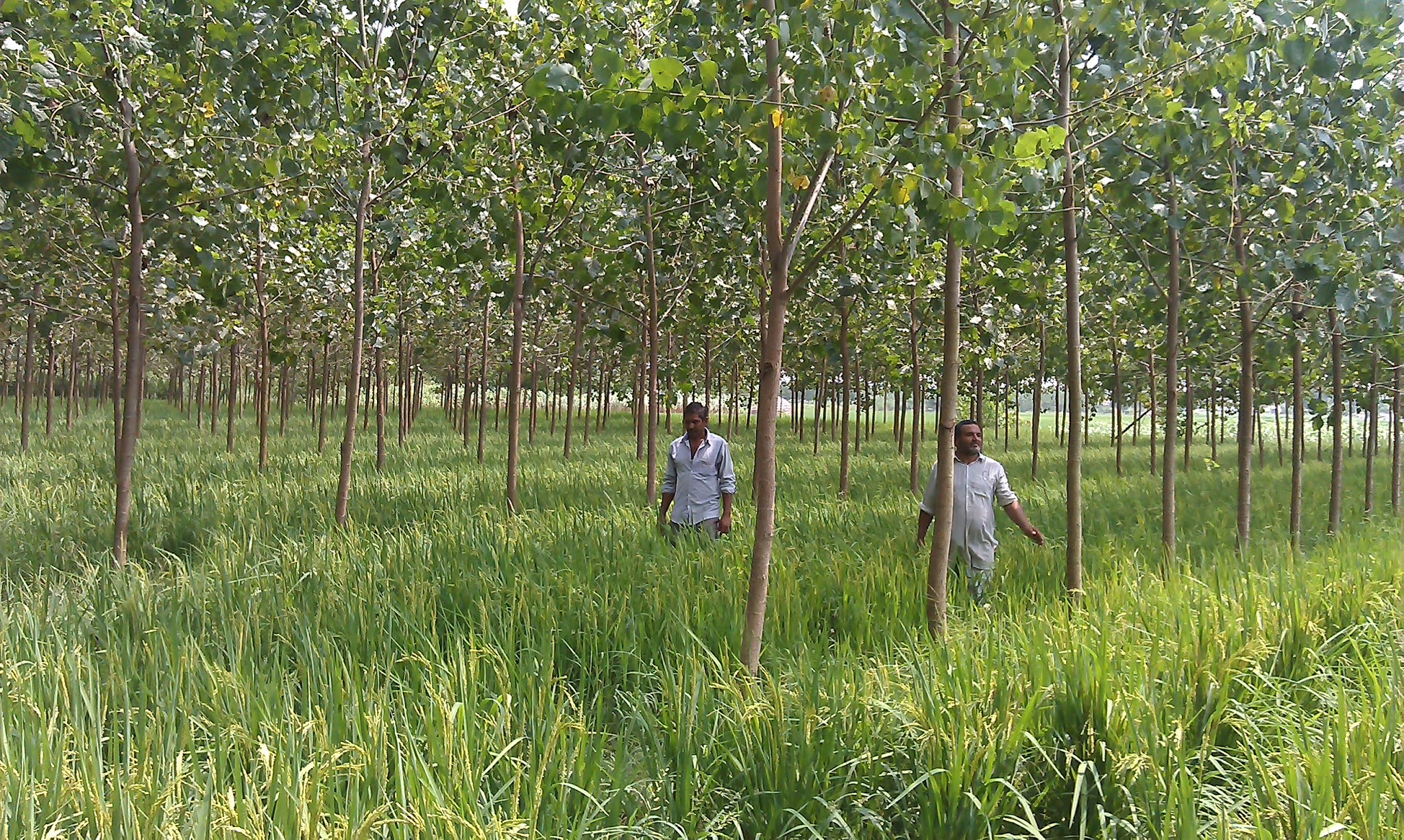Call Us
Mail Us
Address
Kharibot Road, New Baneshwor Ward No. 31, Kathmandu, Nepal

The term agroforestry (AF) comes from two English words Agriculture and Forestry. AF is intensive land-use management combining trees and/or shrubs with crops and/or livestock. It is a suitable land-management system that increases total production, combines agricultural crops, tree crops, forest plants, and or animals simultaneously or sequentially, and applies management practices compatible with the cultural patterns of the local population. AF systems involve growing woody herbaceous species and perennials in association with food crops and livestock on the same piece of land. They are known to increase ecological diversity within a landscape unit and optimize the use of limited resources through the integration of complementary components.
Nair (1984) defined agroforestry as a land use that involves deliberate retention, introduction, or a mixture of the tree or other woody perennials in crop/animal; production fields to benefit from the result of ecological and economic interactions. ICRAF (1982) defined an agroforestry system as a land-use system that integrates trees with agriculture crops, and or animals simultaneously or sequentially to get higher productivity, more economic returns, and better social and ecological benefits on a sustainable yield basis than are obtainable from mono-culture on the same unit of land, especially under conditions of low levels of technological inputs on marginal sites.
Three aspects of this definition are important for the biodiversity value of agroforestry.
Agroforestry Model in Terai Belt of Nepal; A hypothetical example
The model was prepared for 0.5 ha of marshy land in the Terai belt of Nepal. The landowners wanted to prepare an agroforestry model to perform in that piece of land. The agroforestry model that can be adopted in this piece of land was designed by the process of micro D and D.
The steps are as follows:
The area lies in the Terai region of Nepal. The area of land was 0.5 ha. The land is marshy and rice is being cultivated here. The monoculture cultivation of rice has a very low economic return. The area is cultivated once a year (June- October). The productivity of rice production is very low and it is too labor-intensive.
The discussion was done with the owner of the land and problems of that piece of land and the objectives to be addressed are identified.
The objectives of farmers are as follows:
Ø To increase the economic return from the piece of land, through agroforestry practices.
Ø To use the land sustainably.
Ø To increase the productivity of the land.
Ø To perform agricultural activity based on this land holding.
All objectives cannot be performed, so the needs and objectives need to be prioritized based on the need and land suitability. So conscious was done to find out the major objective.
Ø To increase the economic return from the piece of land, through agroforestry practices.
Through the available kinds of literature and consultation, following potential agro-practices were observed in that area.
Agroforestry models should be acceptable to farmers/landowners, environmentally feasible, and economically viable. The practice of silvi-fishery with trees on bunds was found more economically viable, with quick return and suitable to that area. Whereas other models were more expensive and did not suit the local condition.
So, Silvi-fishery was the priority agroforestry practice, with high-income potential.
Ø As the area was marshy, the best option to perform in this piece of land was to silvi-fishery system. Ponds should be built as large as space allows but should be a manageable size. A good size pond to start with might be 6 m by 4 m.
Ø The water in the land can be utilized for fish farming. Different species of fish such as Rohu, Grass carp, Silver carp, and Common carp can be used.
Ø Duck, and Pig can also be incorporated into the area, and fish, duck, and pig are complemented to each other.
Ø In the borderline of fish ponds, small plants can be planted. It also provides a good source of income through this practice.
Ø Plants such as Banana, Papaya, Citrus fruits can be grown, as horticulture practice, at the spacing of 3 m, so that the pond receives enough light.
Ø Napier, Stylo grasses can be planted which are used as the source of food to fish.
Ø This model will start after 6 months.
To implement the model technical help will be provided by the experts of agroforestry. Financial assistance will also be provided by the Agricultural Bank, cooperatives.
The agroforestry model will be reviewed after 1 year, whether it fulfils the objective or not. If not the model could be changed according to the need of the farmer.
Source:
https://www.supusparegmi.com.np/2021/07/model-of-agroforestry-in-nepal.html?fbclid=IwAR12dFt9gunC8pna0iSw3mToBerF7gn1oKnT401CtAH-_Eg0zW69aditpsM